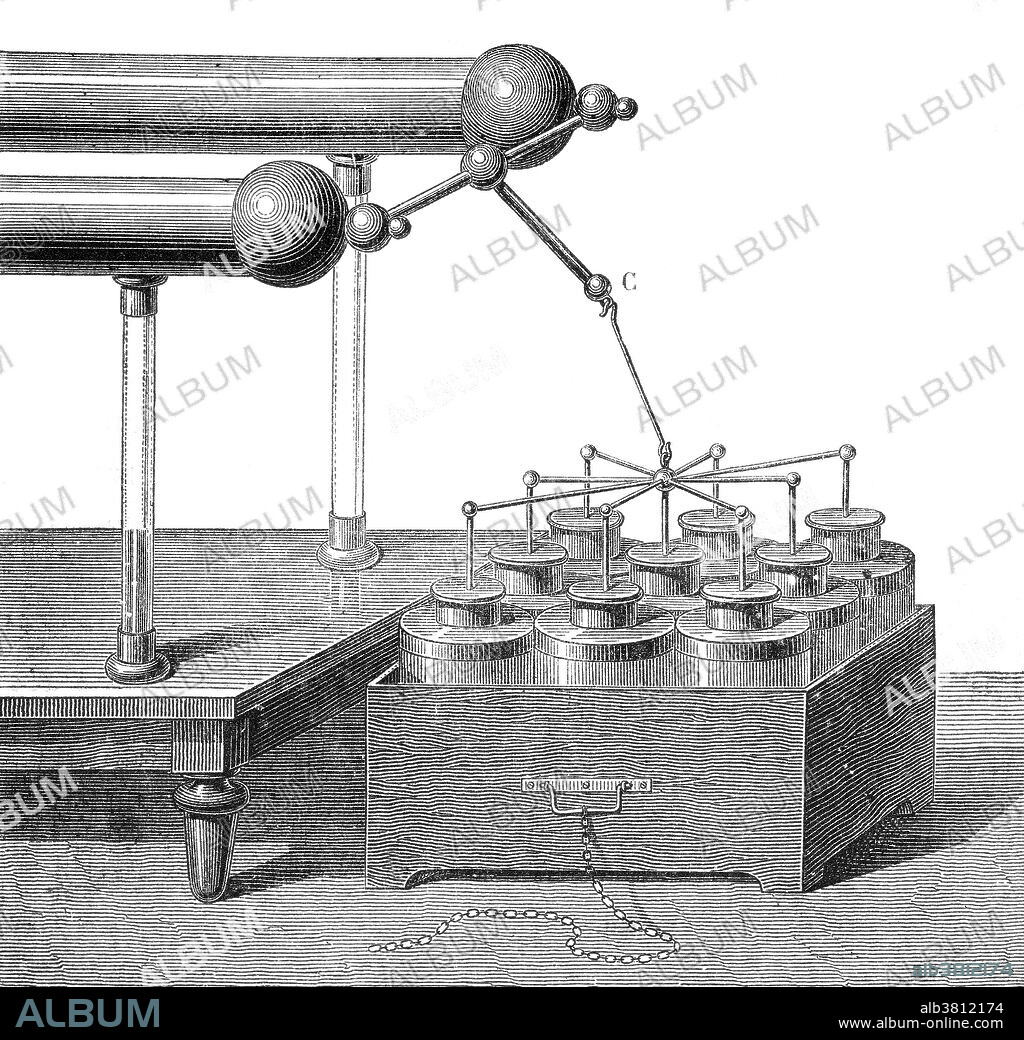alb3812174
Electric Battery, 9 Leyden Jars, 18th Century

|
Zu einem anderen Lightbox hinzufügen |
|
Zu einem anderen Lightbox hinzufügen |



Haben Sie bereits ein Konto? Anmelden
Sie haben kein Konto? Registrieren
Dieses Bild kaufen.
Nutzung auswählen:

Titel:
Electric Battery, 9 Leyden Jars, 18th Century
Untertitel:
Siehe automatische Übersetzung
Electric battery composed of nine Leyden jars. A Leyden jar is a device that stores static electricity between two electrodes on the inside and outside of a glass jar. A Leyden jar typically consists of a glass jar with metal foil cemented to the inside and the outside surfaces, and a metal terminal projecting vertically through the jar lid to make contact with the inner foil. It was the original form of a capacitor (originally known as a condenser). It was invented independently by German cleric Ewald Georg von Kleist and by Dutch scientist Pieter van Musschenbroek of Leiden (Leyden) in 1745-46. The invention was named for the city. The Leyden jar was used to conduct many early experiments in electricity, and its discovery was of fundamental importance in the study of electrostatics. The Leyden jar was the first means of storing an electric charge which then could be discharged at the experimenter's will. Leyden jars are still used in education to
Bildnachweis:
Album / Science Source
Freigaben (Releases):
Model: Nein - Eigentum: Nein
Rechtefragen?
Rechtefragen?
Bildgröße:
3750 x 3614 px | 38.8 MB
Druckgröße:
31.8 x 30.6 cm | 12.5 x 12.0 in (300 dpi)
Schlüsselwörter:
 Pinterest
Pinterest Twitter
Twitter Facebook
Facebook Link kopieren
Link kopieren Email
Email
